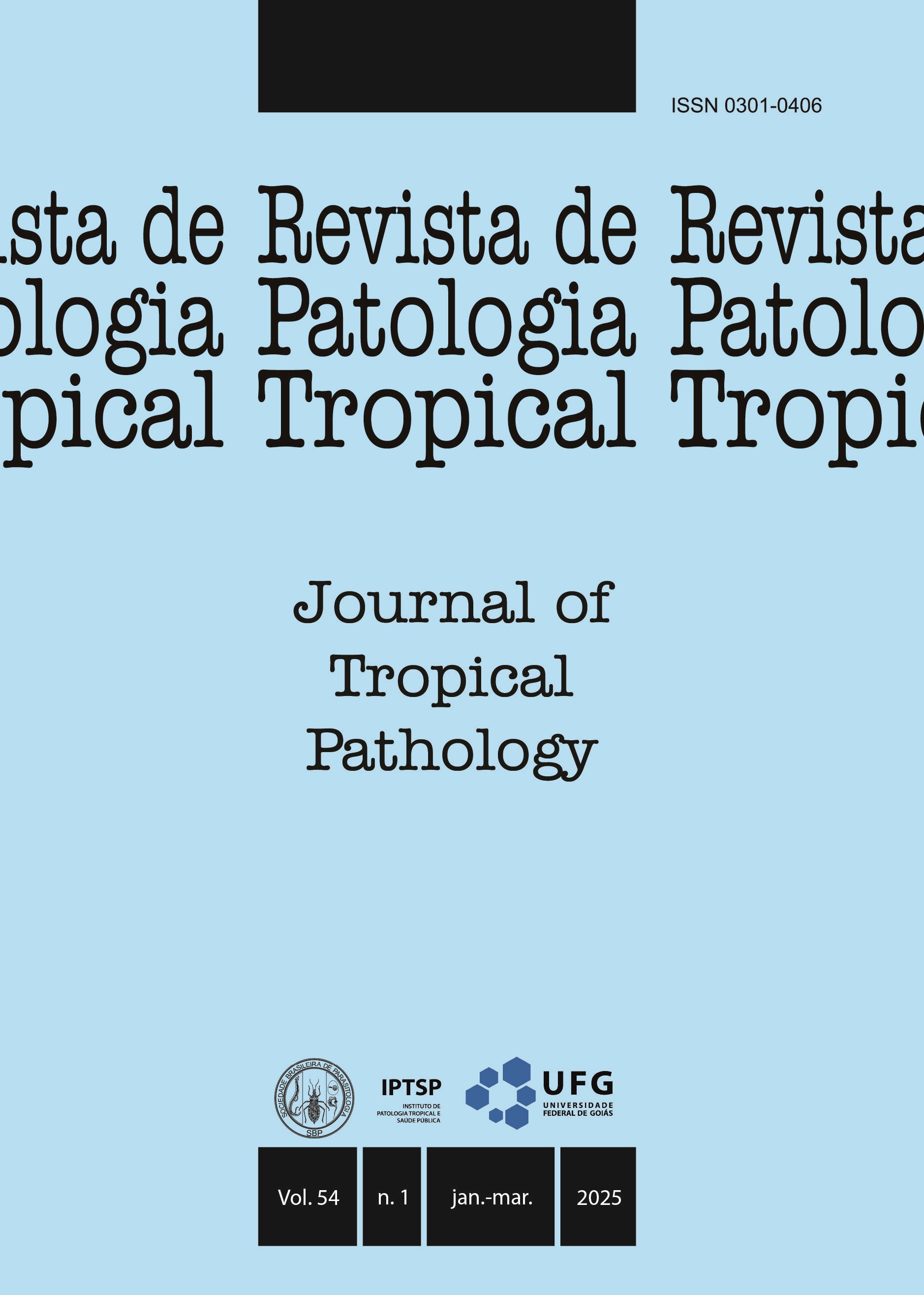Acute toxoplasmosis in a brown-howler monkey (Alouatta guariba clamitans)
DOI:
https://doi.org/10.5216/rpt.v54i1.81087Resumo
Toxoplasmosis is a cosmopolitan disease caused by the obligate intracellular protozoan Toxoplasma gondii. Non-human primates can be part of the parasite cycle, acting as intermediate hosts of T. gondii, may die due to toxoplasmosis. Thus, the objective of this document is to report a case of sudden death in a brown howler monkey (Alouatta guariba clamitans) attributed to toxoplasmosis, describing the macroscopic and microscopic lesions observed. The brown howler monkey was male, medium size, with historical of sudden death and clinical suspicion of yellow fever. At necropsy, poor nutritional status, mild jaundice, pulmonary edema with multifocal areas of hemorrhage, and marked splenomegaly were observed. Microscopy it was observed foci of lytic necrosis of hepatocytes, pericholangitis, periportal hepatitis, and macrovacuolar fatty degeneration; cysts with bradyzoites were found in the telencephalic cortex, liver, and spleen. Biological samples were sent for PCR detection of T. gondii, which tested positive for the technique. Cases of toxoplasmosis in non-human primates are relatively frequent, but the captivity situation presents a greater risk for these animals, in comparisson to natural environments, enhancing the chance of toxoplasmosis to these animals. In this context, preventive measures must be taken into consideration in order to reduce the chance of parasite transmission in zoos.
KEY WORDS: Non-human primates; pathology; toxoplasmosis; Toxoplasma gondii.
Downloads
Downloads
Publicado
Como Citar
Edição
Seção
Licença
The manuscript submission must be accompanied by a letter signed by all authors stating their full name and email address, confirming that the manuscript or part of it has not been published or is under consideration for publication elsewhere, and agreeing to transfer copyright in all media and formats for Journal of Tropical Pathology.

